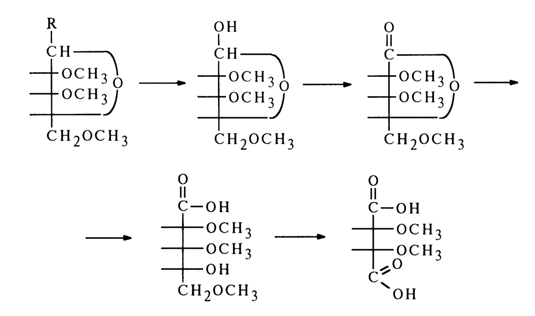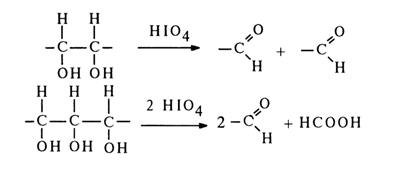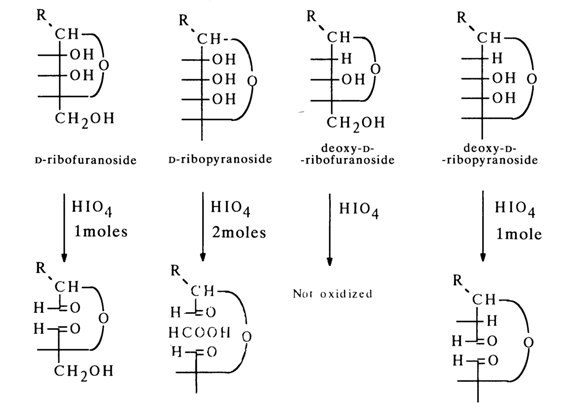![]() Go to frame view (Recommended only for
screen resolution 1024x768)
Go to frame view (Recommended only for
screen resolution 1024x768)
1.5 Size of the Oxide Ring in the Sugar
The structure of the oxide ring in ribonucleosides has been established by the methylation method. 2,3,5-O-Trimethyl-D-ribofuranose has been isolated from an acid hydrolysate of methylated nucleosides, its oxidation yielding at first trimethyl-D-ribonolactone and then meso-dimethoxysuccinic acid:

The furanose structure of ribonucleosides is also borne out by their response to triphenylchloromethane which, as is well known, reacts predominantly with the primary hydroxy groups of the carbohydrate, giving triphenylmethyl (trityl) esters. All nucleosides isolated from DNA and RNA form 5'-O-trityl derivatives with this reagent.
A convenient and simple way to determine the size of the ring in the sugar is through oxidation with periodic acid. This method which was developed for O-glycosides was applied to nucleosides by Todd and coworkers. It is based on the possibility of oxidative cleavage of the C-C bond in 1,2-diols and similar compounds in the presence of periodic acid:

The reaction proceeds quantitatively in aqueous solutions. Measurement of the spent amount of periodic acid by iodometric titration may give an indication whether the glycoside is a furanoside or a pyranoside. Given below are some data concerning the composition of the oxidation products and the oxidizing agent requirements for furanosides and pyranosides of D-ribose and 2-deoxy-D-ribose:

The experimental data on oxidation of ribonucleosides and deoxyribonucleosides indicate that the only structure these compounds can have is that of furanose. The oxidation of nucleosides with periodic acid has provided the basis for a micromethod to determine the size of the carbohydrate ring with chromatographic analysis of the dialdehyde reduction (and hydrolysis) products. The method permits the carbohydrate ring size to be determined at very low concentrations of the substances under investigation.